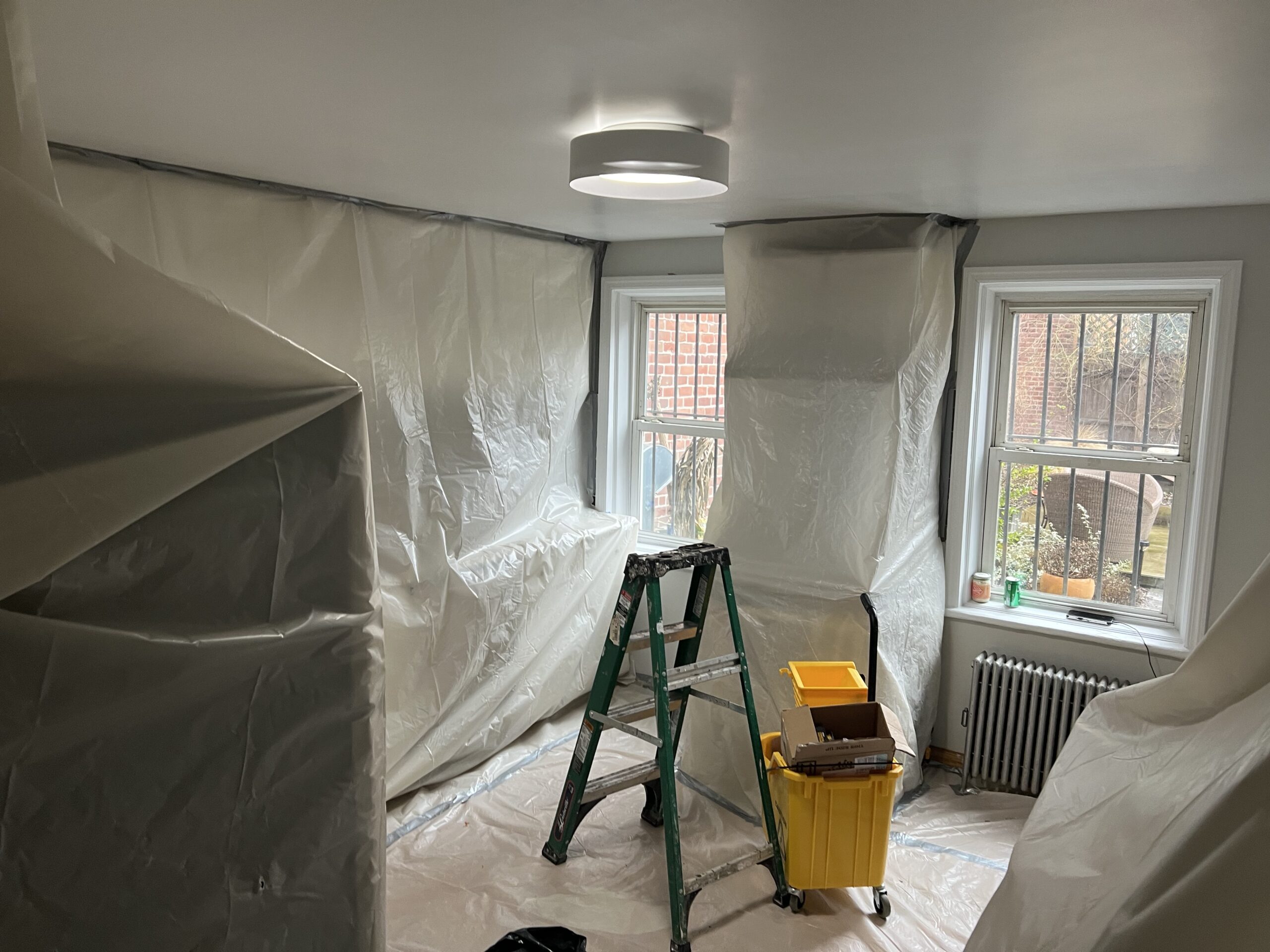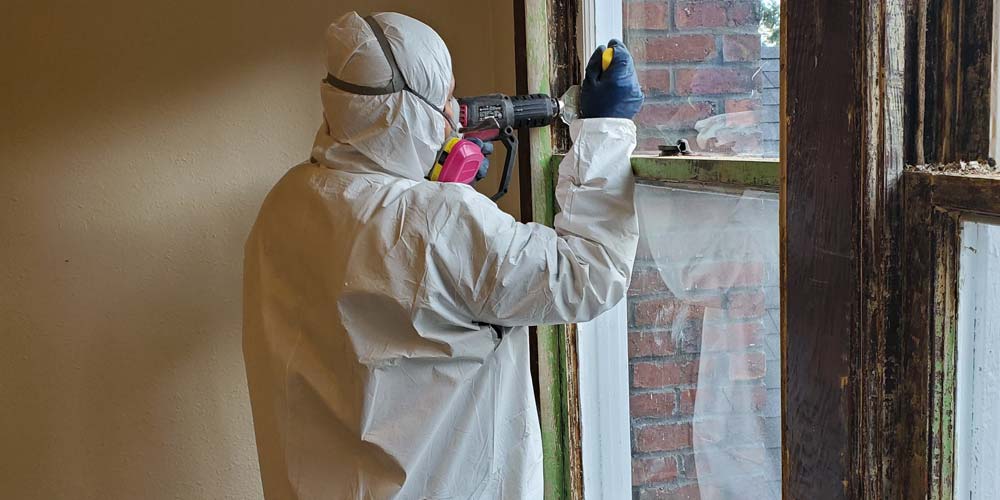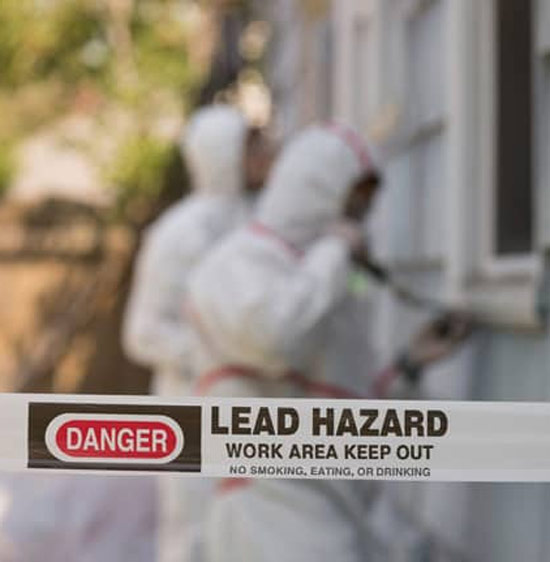Important Tools and Strategies for Reliable Lead Offense Cleaning
Resolving lead violations successfully necessitates a detailed strategy that blends the right devices with tactical approaches. Simultaneously, the use of specialized clean-up devices, such as HEPA vacuum cleaners and lead-specific cleaning agents, is imperative for extensive impurity removal. Efficient control approaches, including plastic sheeting and unfavorable air stress systems, are essential to avoid the spread of harmful products.
Individual Protective Equipment
Personal protective equipment (PPE) is a critical component in the efficient monitoring of lead contamination cleaning. The crucial PPE for lead cleaning consists of respirators, safety garments, gloves, and eye protection.
Respirators, especially those geared up with HEPA filters, are indispensable for filtering system airborne lead fragments, avoiding breathing. Protective clothing, consisting of coveralls and disposable fits, avoids lead dirt from adhering to employees' garments, decreasing the risk of additional contamination.
Moreover, extensive training on the correct use and maintenance of PPE is necessary. Workers need to be educated on putting on and doffing procedures to avoid contamination. Routine inspections and substitutes of PPE parts are required to keep their protective abilities, ensuring a risk-free and certified cleanup operation.
Specialized Clean-up Devices

An additional important device is the wet/dry vacuum cleaner, which can effectively tidy up both dirt and fluid contaminants. These vacuums usually include HEPA filters to offer an added layer of safety and security. Wet wipes or tack fabrics are additionally crucial for surface cleaning; they are especially made to record and hold lead fragments, decreasing the danger of spreading out contamination.
For even more persistent down payments, specialized lead-removal cleaner are required. These agents are formulated to damage down lead fragments, making them simpler to remove. Scrub brushes with strong bristles can aid in this procedure, specifically on rough surface areas where lead dirt often tends to stick more highly.
Additionally, encapsulants are used to secure lead-contaminated surface areas, protecting against the launch of lead dirt. These specialized paints and layers are developed to abide by different substratums, providing a lasting service for lead control.
Efficient Containment Approaches
Effective control methods are important in minimizing the spread of lead contamination throughout clean-up tasks. Executing durable control strategies makes certain that lead fragments do not migrate to unaffected locations, thus shielding both employees and the environment. One primary method is using plastic sheet to seal contaminated zones. Heavy-duty polyethylene obstacles can be mounted from floor to ceiling to develop a regulated job location, significantly minimizing the danger of air-borne lead dust dispersal.

To improve control, encapsulants can be put on surface areas that are not being eliminated or disturbed. These specialized layers bind lead dust, reducing its accessibility for resuspension. Additionally, all employees should put on suitable Individual Protective Tools (PPE), including respirators and non reusable suits, to avoid contamination spread.
Safe Disposal Practices
Guaranteeing risk-free disposal techniques is a critical element in the administration of lead contamination cleaning. Correct disposal reduces the danger of lead returning to the setting and jeopardizing public health (DOH & you can try these out HPD Lead Violation Removal NYC).
Transferring lead waste needs adherence to rigorous standards. Making use of licensed hazardous waste providers guarantees that pop over to these guys the products are managed sensibly. Documents, consisting of shows up describing the kind and amount of waste, need to go along with shipments to track the waste from the site of origin to its final disposal location.
Designated contaminated materials disposal facilities are equipped to handle lead-contaminated products securely. These centers commonly use innovative techniques such as stablizing, solidification, or chemical treatment to neutralize the lead before disposal. Landfilling in specialized, lined locations that protect against leachate from infecting groundwater is a typical method for last disposal.
Regular training for workers associated with lead waste disposal is vital to preserve safety standards and protect against unintended direct exposure. By adhering to these practices, companies can substantially decrease the environmental and wellness effects related to lead contamination.
Regulatory Conformity Tips

Following regulative compliance is vital in the successful implementation of lead contamination clean-up. Recognizing and complying with federal, state, and regional regulations makes certain not only the safety and security and health and wellness of people however additionally the legal and economic wellness of the cleaning organization. The Environmental Defense Agency (EPA) establishes strict criteria, such as the Lead Remodelling, Fixing, and Painting (RRP) Policy, which mandates proper accreditation and training for contractors managing lead-based tasks.
Compliance begins with a detailed assessment of appropriate regulations and laws. Organizations must stay upgraded on any kind of legislative changes, which can be helped with with normal training sessions and registering for industry updates. Documentation is another vital conformity element; preserving comprehensive documents of all tasks, consisting of inspection reports, employee training logs, and disposal manifests, is important.
Furthermore, engaging with accredited lead examiners or run the risk of assessors guarantees that lead risks are properly determined and reduced. Employers must enforce using Individual Safety Tools (PPE) and make sure that security procedures are strictly followed. Transparent communication with stakeholders, consisting of workers, clients, and governing bodies, will certainly foster a society of conformity and accountability, inevitably adding to a safer and more effective lead cleanup procedure.
Conclusion
Efficient lead infraction cleaning demands the combination of specialized tools and critical methods to guarantee safety and security and effectiveness. Utilizing HEPA vacuum cleaners, specialized cleaning representatives, and efficient control techniques such as plastic bed linen and unfavorable atmospheric pressure systems is imperative. Individual safety devices (PPE) safeguards employees from exposure, while secure disposal practices and rigorous adherence to regulatory conformity are essential for properly taking care of contaminated materials. Jointly, these steps dramatically check here reduce wellness risks and contribute to a cleaner setting.